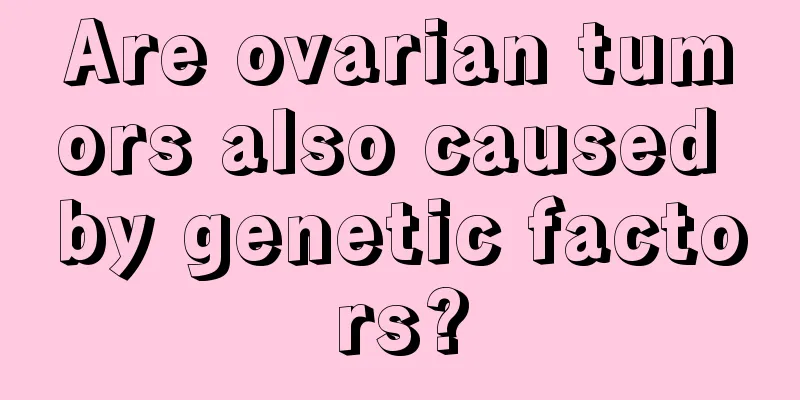Are ovarian tumors also caused by genetic factors?

|
Many women with ovarian cysts have a large part of the cause related to genetics, and coupled with an unhealthy lifestyle, which leads to malignant tumors in the ovaries. Therefore, the occurrence of ovarian cysts is closely related to the hospital. Let's take a closer look: Some people advocate that prophylactic oophorectomy be performed on women with children whose estimated hereditary risk of ovarian cancer is as high as 50%, but there is still a possibility of extraovarian serous papillary carcinoma arising from the pelvic intestinal epithelium after surgery. The high risk of ovarian cancer is determined based on pedigree analysis. If a woman has a first-degree relative with hereditary ovarian cancer or other related cancers (such as breast cancer in hereditary breast-ovarian cancer syndrome), the risk of her offspring having an abnormal genotype is 50. Genetic predisposition is an important factor in the development of a small number of epithelial ovarian cancers, and people have paid attention to the role of genetic factors in the etiology of ovarian tumors. An estimated 10 to 15% of ovarian malignancies occur in familial clusters, of which only 5 conform to a dominant genetic transmission pattern. The common types of hereditary ovarian malignancies are: ovarian cancer associated with breast-ovarian cancer syndrome, hereditary nonpolyposis colorectal cancer syndrome (Iynch syndrome) type II, and hereditary ovarian cancer syndrome in specific locations. The onset age of ovarian cancer in these three types of family members who are susceptible to ovarian cancer is earlier than that in the general population, with the average age at diagnosis being 49, 35 and 52 years old, respectively; the histological type of their hereditary ovarian cancer is similar to that of ordinary ovarian cancer, with moderately and highly differentiated serous papillary cystadenomas being the most common. Less common are ovarian granulosa-thecoma cell tumors in hereditary gastrointestinal polyposis with mucocutaneous pigmentation (Peutz-Jeghers syndrome) and ovarian fibromas and cysts in multiple nevoid basal cell carcinoma syndrome. Hereditary ovarian germ cell tumors are rare compared with ovarian epithelial tumors, but a relatively high incidence of germ cell tumors has been found in patients with hereditary gonadal dysgenesis. Through understanding, we know some knowledge about the inheritance of ovarian cysts. Ovarian cysts are related to genetics, so when there are women with ovarian cysts in the family, we must be more vigilant about the occurrence of ovarian cysts and be prepared to prevent them in life. |
<<: How can women prevent the recurrence of ovarian tumors?
>>: What are the complications of ovarian tumors
Recommend
What to do if an insect bite causes redness and swelling
When the weather is warm, parents like to take th...
Can people who wear contact lenses take a hot spring bath?
People with myopia who don't want to wear fra...
How to make yogurt cereal
People should be familiar with oatmeal. Oatmeal i...
What are the radiation-proof plants?
Nowadays, with many electronic products, radiatio...
How to easily remove the odor from shoes
Rubber shoes and sneakers have poor air permeabil...
Which green tea tastes best? How does it taste
Green tea is a common type of tea, and there are ...
Can I eat fruit right after having an abortion
Abortion surgery is very harmful to the female bo...
What are the dangers of kidney cancer
Kidney cancer is a very serious malignant tumor d...
Which muscles are exercised by climbing stairs
Climbing stairs can exercise the thigh muscles an...
How to prevent snake bites
Nowadays, outdoor camping has gradually become po...
Who may be at high risk of colon cancer
In recent years, the evidence of genetic factors ...
Is it normal to have a headache after chemotherapy for nasopharyngeal carcinoma?
Is it normal to have a headache after chemotherap...
Causes of cervical tumors
Cervical cancer is the most common benign tumor o...
Butterfly massage process
There are many ways of massage. Butterfly massage...
What vitamins can help hair growth when losing hair
Many people think that hair loss is a physiologic...









